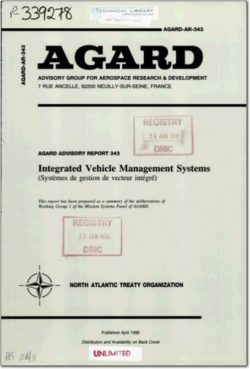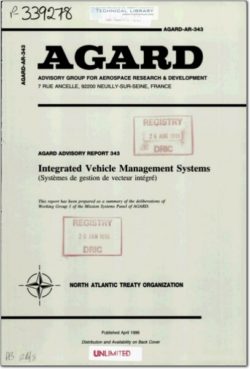AGARD-AR-343

- Version
- 339 Downloads
- 21.36 MB File Size
- 1 File Count
- March 8, 2016 Create Date
- March 8, 2016 Last Updated
Integrated Vehicle Management Systems

Modern aerospace systems are required to perform greatly expanded mission functions with higher survivability
rates at reduced costs. Such conflicting goals have stressed technology in important ways. While the explosion of
digital and sensor technology has offered impressive performance enhancements for military weapons platforms, the
costs of implementation and life-cycle ownership can be enormous if not carefully designed.
Fortunately, with the trends toward physical integration using modular avionics, we are starting to realize the
reduced costs necessary. Unfortunately the benefits of integration have not been exploited by the vehicle
management systems. The critical issue is to create these benefits yet guarantee the flight-critical and safety
requirements of vehicle management systems.
This report deals with the design of the important features and functions of vehicle management systems
necessary to achieve the benefits of integration.
Despite the controversy, one definition should be established.
Any function that is flight or safety critical is part of the VMS. For
instance, navigation can be included in payload definition or VMS;
however, modern strapdown navigation systems typically share
sensors with flight control functions. In this case, navigation would
be a VMS function, as defined by Figure 1—].
VMS and payload functions for these vehicles are shown in more detail in Table l-l. Although safety
requirements for these vehicles vary considerably, the use of redundant systems and fault-tolerant design techniques
is increasing in popularity for all these vehicle classes for economic reasons. The proper design of integrated
systems is, therefore, of high interest for all of these vehicles. Notice that most, but not all, of the flight—critical
functions are in the VMS category. In the future, all flight— and safety-critical functions should be contained under
the VMS “fault-tolerant umbrella.”
| File | Action |
|---|---|
| AGARD-AR-343 Integrated Vehicle Management Systems.pdf | Download |

Comment On This Post